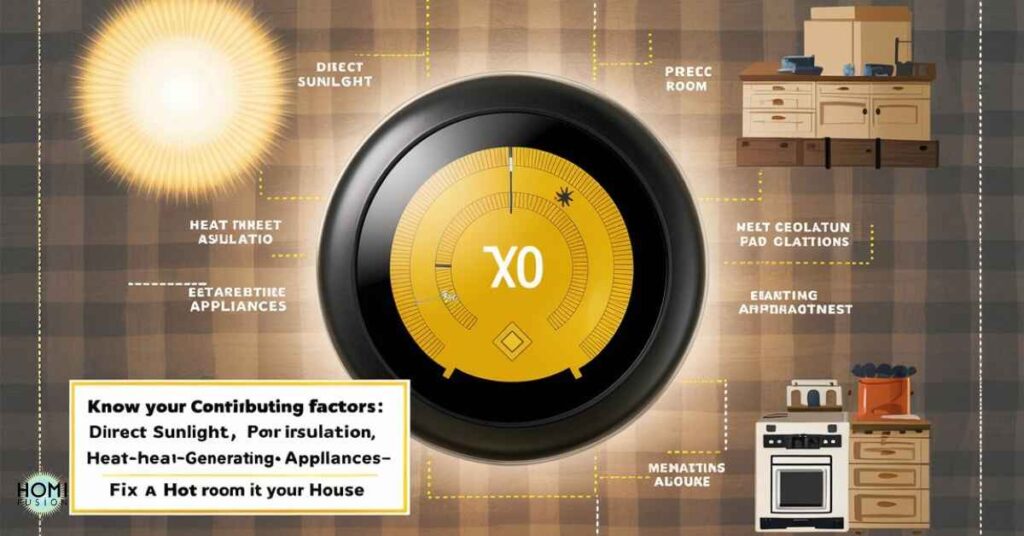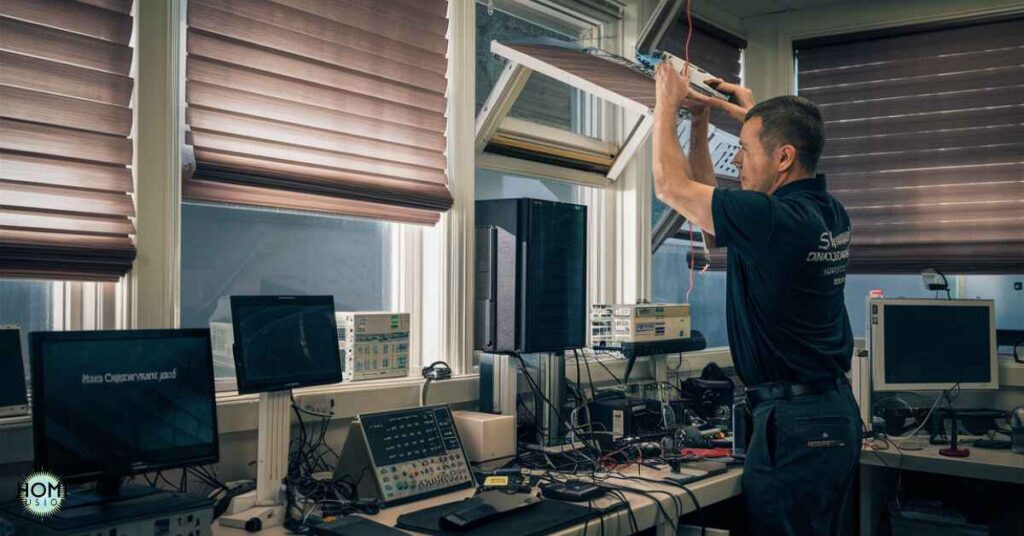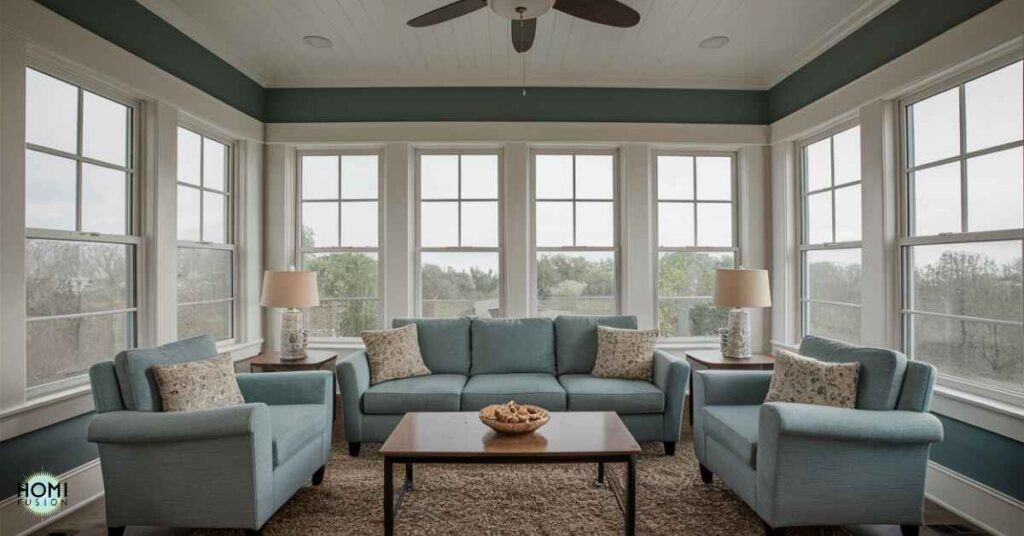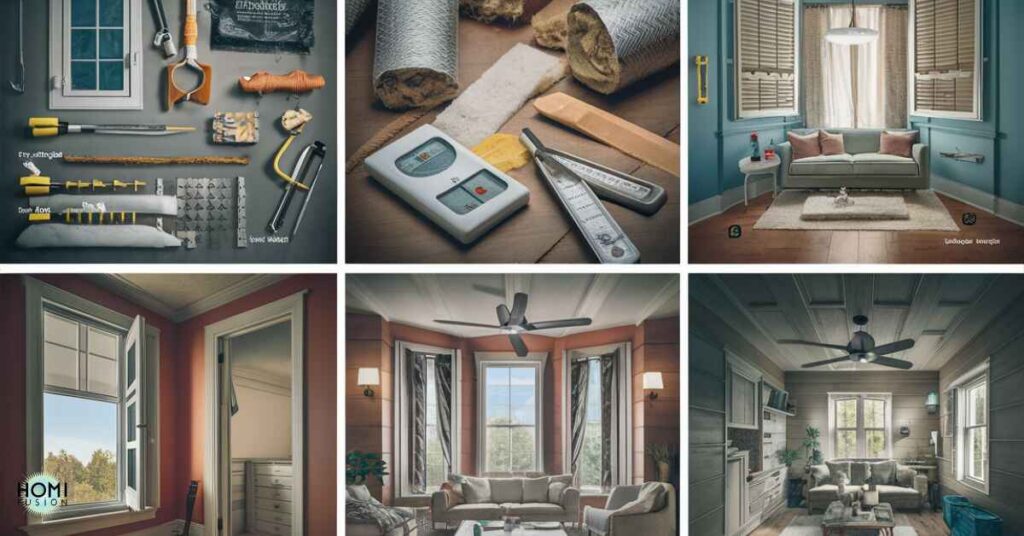Dealing with a hot room in your house? Learn practical solutions to cool it down. This article delves into understanding contributing factors like electronics and sun orientation.
It also explores easy fixes such as vent checks and ductwork repairs, providing actionable tips. You can learn how to optimize your HVAC system and use solar shades and ceiling fans effectively. These simple adjustments can create a more comfortable living space.
How Hot is the Room in Your House?
Understanding the temperature in your home is crucial for comfort. Factors like sun exposure and location impact room temperatures. South-facing rooms may be warmer due to direct sunlight. Rooms farther from HVAC units might experience uneven temperatures.
Assessing these factors helps in determining hot spots in your house. Adjustments like using curtains and fans can improve room comfort.
Know Your Contributing Factors
Understanding factors like electronics, sun exposure, HVAC distance and house location helps identify why a room is hot.

Heat Producing Electronics
Electronic devices like computers, televisions, and lamps generate significant heat. This heat contributes to the overall temperature of a room. Managing the use of electronics is crucial; ensuring they’re properly ventilated can reduce heat production. This contributes significantly to a cooler room environment.
Orientation to the Sun
The orientation of a room relative to the sun plays a significant role in its temperature. Rooms that receive direct sunlight for extended periods tend to be warmer, especially during peak sunlight hours. Utilizing window treatments like blinds or curtains can help block out excess sunlight and keep the room cooler.
Distance from the HVAC Unit
The distance of a room from the HVAC (Heating, Ventilation and Air Conditioning) unit can impact its temperature. Rooms located farther away may receive less airflow and cooling, leading to higher temperatures. Ensuring proper airflow distribution and possibly adjusting the HVAC settings can help regulate the temperature more evenly throughout the house.
Location in House
The location of a room within the house can also influence its temperature. Rooms on upper floors or those located near uninsulated areas may experience higher temperatures due to heat rising or lack of insulation. Improving insulation, using fans, or adjusting HVAC settings can help mitigate these temperature differences and create a more comfortable environment.
Read this blog: Why Is My New Ac So Loud Inside My House?
Easy Fixes for a Hot Room

When dealing with a hot room, there are several easy fixes that can make a significant difference. These fixes include checking and ensuring proper ventilation through vents and inspecting and repairing damaged ductwork. Additionally, regularly changing air filters maintains optimal air quality and addressing poor insulation improves insulation materials.
Move Electronics
Moving electronics like computers, televisions, and lamps from direct heat sources can reduce heat generation. Proper ventilation further aids in maintaining a cooler room environment.
Solar Shades
Installing solar shades or using window treatments blocks excess sunlight, preventing rooms from overheating. This reduces solar heat gain, particularly during peak sunlight hours.
Ceiling Fans
Using ceiling fans can help circulate cool air more effectively, creating a breeze that can make a room feel cooler without significantly affecting energy consumption.
Make use of your HVAC’s fan
Using the fan setting on your HVAC system helps distribute cool air evenly. This is particularly beneficial in rooms with limited airflow from the air conditioning unit alone.
Change your filter
Regularly changing your HVAC system’s air filter ensures optimal airflow and air quality. This prevents dust and debris buildup, which can otherwise hinder cooling efficiency.
Install a humidity sensing thermostat
Installing a humidity-sensing thermostat gives you better control over indoor humidity levels. This control can significantly impact the comfort level of a room, especially during higher temperatures.
Have an AC tune-up completed
Scheduling regular tune-ups for your air conditioning system ensures it operates efficiently, maximizing cooling performance and reducing energy consumption.
Have your windows tinted

Tinting windows effectively blocks excess sunlight and reduces solar heat gain. This keeps rooms cooler and decreases the workload on your air conditioning system.
Plant a tree
Strategically planting trees outside windows or near the house provides natural shade. This reduces the amount of sunlight entering and heating up rooms, helping maintain a cooler environment.
Bring in backup
Consider using portable fans or air conditioning units as backup cooling options for particularly hot days or rooms that need extra cooling.
Replace it timely
Consider replacing an old or inefficient air conditioning unit or HVAC system. Upgrading to a newer, more energy-efficient model can improve cooling performance and reduce long-term energy costs.
Also read: Why Is It Humidity In My House?
Frequently asked questions
How do you keep a room cool in a hot house?
To maintain a cool room in a hot house, employ strategies such as closing curtains during the day and using fans or air conditioning. Additionally, minimize heat sources like electronics to enhance cooling efficiency. Additionally, improving insulation and sealing drafts can help maintain cooler temperatures.
How do I get rid of hot air in my room?
To get rid of hot air in your room, open windows at night for ventilation and use fans or air conditioning during the day. You can also minimize heat sources and improve insulation to keep the room cooler.
Why is a room in my house so hot?
A room in your house may be hot due to factors like sun exposure, poor insulation, or proximity to heat-producing electronics. Improving ventilation, using shading techniques, and addressing insulation issues can help reduce the heat.
How to improve air flow in a home?
To improve airflow in a home, open windows strategically for cross-ventilation, use fans to circulate air, and keep vents unobstructed. Additionally, sealing leaks and ensuring HVAC systems are properly maintained can enhance overall airflow.
Why is my room still hot with the AC?
Your room might still be hot with the AC due to factors like inadequate insulation, heat from electronics, or blocked vents. Ensuring proper insulation, minimizing heat sources, and optimizing airflow can help improve cooling efficiency.
Conclusion
Addressing a hot room involves understanding its unique contributing factors. By focusing on electronics, sun orientation, HVAC distance and house location, you can implement targeted fixes. Strategies like vent checks, duct repairs and optimizing airflow through HVAC adjustments play a crucial role.
Additionally, simple changes such as using solar shades, ceiling fans and managing electronics can significantly impact room temperature. Regular maintenance like changing filters, installing a humidity-sensing thermostat and having AC tune-ups are also essential. Ultimately, combining these solutions tailored to your room’s specific needs ensures a cooler and more comfortable living space.







